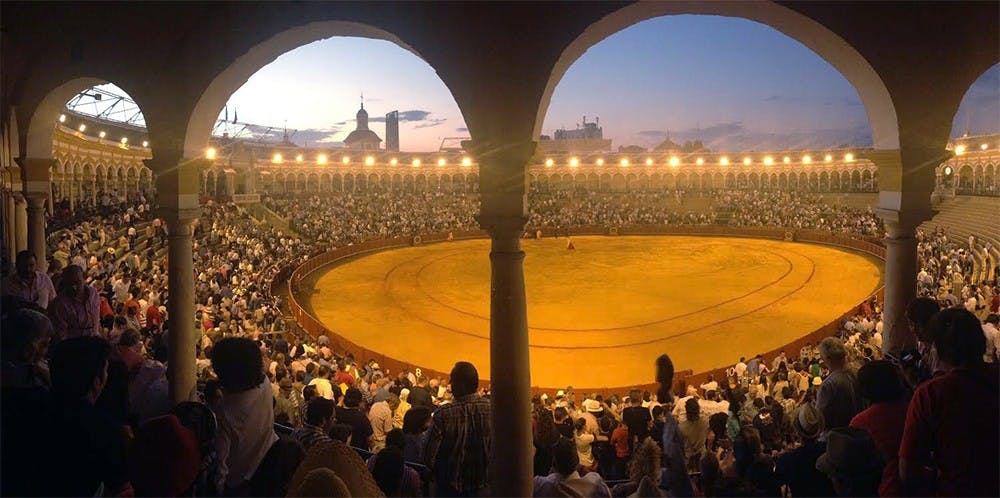Bullfights are a huge tradition in Seville, Spain, with references sprinkled through the city and related souvenirs stocked in every tourist shop. While we might enjoy a tailgate and a football game on the weekends, many Sevillanos, in addition to their strong love for fútbol, attend “corridas,” or bullfights.
Fashionably late to my first bullfight, my mad dash through the streets had me a bit frazzled by the time I arrived at la plaza de toros. Exhausted and sweaty, I was extremely mentally unprepared for what I was about to witness.
The perfectly detailed, sequined garments of the toreros were reminiscent of the pizzazz and extravagance one might see on Broadway, but this event was nothing close to that of show tunes and jazz hands.
Every match begins with releasing the bull as the torero calls out to it, and you can sometimes hear the bull ramming against the arena door. After the initial encounter and a short period of one-on-one action between the torero and bull, the trumpets sound and another man on a horse arrives to get a few spears at the bull. In the midst of this process, the torero’s “assistants,” as I’ll call them, throw another type of weapon to slow down the bull.
As I started to doze off in the heat — bam! One of the men was linked to the bull and launched in the air. My eyes, and those of my fellow first-time attendees, popped wide open. He was thrown to the ground by the bull, and the others quickly distracted the bull while he recuperated. And like it was nothing, he sprung back up, brushed himself off and persisted with the duel.
When the horse and its entourage exited, the torero had the task to finish the fatigued bull. The chatter would subside just before the torero would strike.
“Shhh!” The ladies’ fans stopped flapping. The stands silenced. Pure anticipation.
If he was good, he could finish the bull in one or two strikes; however, the other men would often help him tire the bull until he could get a clean blow. After each round, the spectators would stand to clap for the torero. However, I could not find the motivation to join, as I felt a bit uneasy about the situation.
When the deed was done, three horses dressed in red and white garnishes dragged the bull out of the stadium. The process was repeated five more times until a total of six bulls were killed.
Among my study abroad group, there were mixed reviews. It was definitely a bit gruesome, although I was in the nosebleeds and was spared some of the nitty-gritty details. It was not an activity for the faint of heart, and while I am happy to check it off my Seville to-do list, it is not a tradition I will likely be returning to.
lsaxe@indiana.edu






